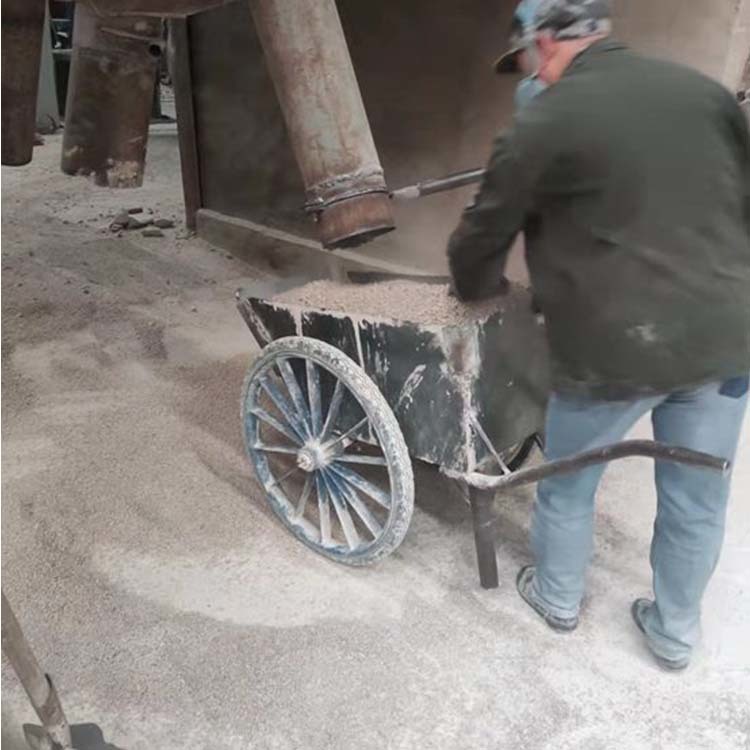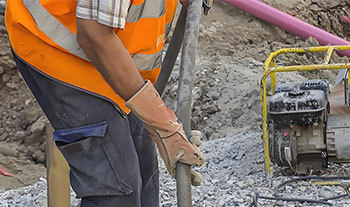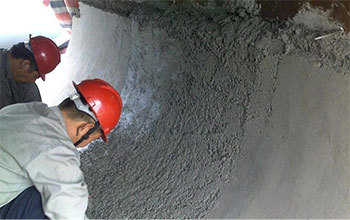Iron ladle castable process flow
2025-07-30
Production Process of Iron ladle castable
The production process of iron runner castable is divided into two stages: raw material preparation and mixing and proportioning. Iron runner castable resists the erosion of high-temperature molten iron and slag. It is mainly used in the construction of the inner lining of the iron runner in a blast furnace.
Raw Material Preparation Stage
In the raw material preparation stage, the main materials include: Coarse particles (1-3mm, accounting for 50%-60%) and fine powder (200-325 mesh, accounting for 40%-50%) are used for grading optimization corundum, silicon carbide, aluminate cement, etc. Auxiliary materials include steel fiber, explosion-proof agent, dispersant, etc. The particle grading needs to be mixed proportionally. The ratio of coarse, medium, and fine particles is usually 4:3:3 to ensure a dense structure after casting. The amount of steel fiber added is controlled between 1%-2% to enhance crack resistance. All raw materials need to be dried in advance to avoid excessive moisture leading to later cracking.
Mixing and Proportioning Stage
A forced mixer is used, with 50% high-alumina bauxite clinker, 20% silicon carbide (SiC), 15% corundum (α-Al₂O₃), 5% calcium aluminate cement, and 7% graphite + metallic silicon powder. First, add dry materials and stir for 5 minutes to ensure that the dry materials are mixed evenly, then add 4%-6% binder and water. The amount of water added is crucial, generally controlled at 5%-7%. Too much will lead to poor fluidity or increased pores, and the vibration fluidity value ≥180mm. Too little will affect the construction performance. The mixing time should be no less than 5 minutes to ensure that there are no lumps and the color is uniform. The mixed material should be used within 30 minutes, otherwise, the initial setting of the cement will affect the performance. 
Construction Stage
Before construction, clean the residual slag in the iron runner and check whether the mold is firmly fixed. After applying release agent to the inner wall of the mold, install the positioning steel pipe. During vibration molding, use an insertion-type vibrating rod to eliminate air bubbles. During casting, layer the material, control the apparent porosity to ≤8%, and the thickness of each layer should not exceed 300 mm. Use a vibrating rod to vibrate from the edge to the center to avoid missing vibration or over-vibration. The mold joints need to be treated carefully to prevent molten iron from penetrating. After construction, cover the surface with plastic film to prevent moisture from evaporating too quickly.
Baking Stage
The baking stage is divided into two steps: static placement and temperature increase. The static placement environment temperature is maintained at 15-25℃, and the humidity is greater than 80%. Static placement for 24 hours allows the cement to fully hydrate (flexural strength ≥3MPa), and then dried at 110℃ for 24 hours (or rapid baking ≤8 hours) to increase the flexural strength to ≥6MPa. After curing, remove the mold and check whether the surface is cracked or loose. If there are defects, they need to be repaired. The repair material needs to be consistent with the raw material composition, and a special tool is used to compact and smooth it.
Baking is a crucial step that directly affects the service life. The calcination temperature needs to be monitored by an infrared thermometer. The initial temperature is controlled below 50℃, and the temperature is increased by 10℃ per hour to avoid rapid evaporation of water causing cracking. After 300℃, keep warm for 4 hours to remove residual water; at 800℃, keep warm for 6 hours to promote the sintering reaction to form a ceramic bond, ensuring that the binder is fully carbonized. The baking curve needs to be adjusted according to the material thickness, and the heating rate of thick-walled parts needs to be slower. After baking, naturally cool to room temperature to avoid stress cracking caused by rapid cooling.
Before putting into use, conduct an airtightness test to check whether there are any penetrating cracks in the inner lining using compressed air. When the iron is discharged for the first time, a small amount of molten iron is discharged to preheat the groove to avoid thermal shock damage. Daily maintenance requires regular cleaning of residual iron and slag layers. If the local erosion depth exceeds 50 mm, it needs to be repaired with the same material.
 |  |
The flow rate and temperature of molten iron in different blast furnaces vary greatly, and the formula needs to be adjusted accordingly. For example, in areas with a large molten iron flow rate, the silicon carbide content can be increased to 35% to improve wear resistance; in the slag line area, zirconia can be added to enhance slag erosion resistance. When the construction environment temperature is below 5℃, the raw materials need to be preheated to prevent abnormal setting time.
Next Page:



